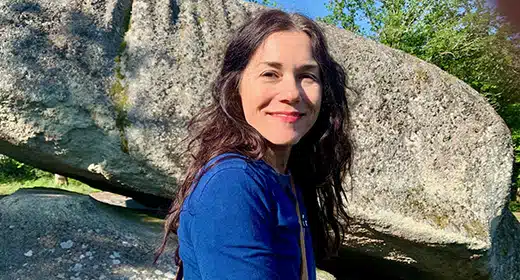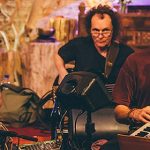by Monica Potts: And why that will make communication around the next crisis so much more challenging…
By September 2021, the scientists and staffers at the Arkansas Game and Fish Commission had gathered enough data to know that the trees in its green-tree reservoirs — a type of hardwood wetland ecosystem — were dying. At Hurricane Lake, a wildlife management area of 17,000 acres, the level of severe illness and death in the timber population was up to 42 percent, especially for certain species of oak, according to a 2014 forest-health assessment. The future of another green-tree reservoir, Bayou Meto, more than 33,000 acres, would look the same if they didn’t act quickly.
There were a lot of reasons the trees were dying, but it was also partly the commission’s fault. Long ago, the Mississippi and Arkansas rivers and their tributaries would have flooded the bayous naturally, filling bottomland forests during the winter months when the trees were dormant and allowing new saplings to grow after the waters receded in the spring. Widespread European settlement and agriculture largely halted the natural flooding, but in the 1950s, the Arkansas Game and Fish Commission began buying bottomland forests for preservation, which it then flooded with a system of levees and other tools.
This made the forests an ideal winter stop for ducks to eat and rest on their annual migration south. Arkansas is a magnet for duck hunters, and the state has issued more than 100,000 permits for duck hunters from Arkansas and out of state for every year since 2014. But it turned out the commission was flooding the reservoirs too early and at levels too high, which was damaging the trees. The ducks that arrive in Arkansas especially love eating the acorns from a certain species of oak — and those oaks are now dying.
Austin Booth, director of the Arkansas Game and Fish Commission, knew that convincing the state’s duck hunters and businesses that there was a serious problem would be tricky. Part of the solution the commission planned to propose to save the trees involved delaying the annual fall flooding, which could mean less habitat for the ducks, fewer ducks stopping in the area and more duck hunters crowded into smaller spaces fighting over targets.
And all the duck hunters would have their own ideas about who to blame for the problem and what the solution should be.
Last September, Booth gave a brief speech that was streamed live on YouTube, outlining the problem. He announced a series of public meetings to begin in the following months. Booth told me that when he began to plan those meetings, he thought of all the government meetings and town halls he’d attended after years working in politics. “I wanted to ratchet down some of the intensity that happens when a government official stands up on a stage and talks down to people,” he said.
Instead, he decided the meetings would be dinners where the Game and Fish staff would eat alongside the people they sought to convince. “I just believe there’s a human component to sitting down and having a meal with someone,” he said. At those dinners, he’d give a brief introduction, then invite people to ask questions of the staff as they ate and mingled.
At the end of the dinners, Booth said he’d stand up again and ask, “Is there anyone that’s going to walk through that door tonight without their questions answered or comments taken for the record, or with their concerns ignored?” No one, he said, came forward. The four dinners were attended by between 50 and 100 people, according to Booth, but those attendees then spread the word, dampening criticism of the new management system.
What’s interesting about this dinner program is that it began during the COVID-19 pandemic, which also required effective science communication to convince the public to accept changes, major and minor, to their lives. Even before this pandemic, there’s been a long history of resistance to public health measures and new vaccines, and many researchers suspected that could likely be the case with COVID-19 as well. The social scientists who study these issues might have counseled an approach like that employed by the Arkansas Game and Fish Commission, using local messengers who had relationships with the communities in question and who could communicate in less intimidating ways.
But the U.S. did not do that with COVID-19. Instead, rapidly changing information came from only a few sources, usually at the national level and seemingly without much strategy. And as such, many places have seen widespread resistance to public health interventions, like wearing masks and getting the vaccine.
The intensely local, personal way that Arkansas Game and Fish approached this challenge is difficult, time-consuming and perhaps not always the most practical. But it shows the kind of intensity it takes to communicate an urgent problem, and may provide lessons for how to approach the next big problems — whether that’s another pandemic, an ecological disaster or something bigger and more existential, like climate change.
Before the pandemic, Matthew Motta, a political science professor at Oklahoma State University, and his colleagues Timothy Callaghan, Steven Sylvester, Kristin Lunz Trujillo and Christine Crudo Blackburn studied parents’ hesitancy about giving their kids routine vaccinations, like those for measles, mumps and rubella. Reasons varied, and the most prominent was conspiratorial thinking. Some parents who delayed their children’s vaccines also held strong ideas about moral/bodily purity, which often correlated with higher levels of religiosity. Evangelical Christians, people who distrusted scientists and other experts and people prone to believing in conspiracies were also among the groups finding a home in the Republican Party, too.
Many of these characteristics also tend to cluster in rural areas, where COVID-19 vaccination rates continue to lag. “With the very important caveat that we’re talking about two different vaccines … I would say it’s roughly the same groups of people,” Motta said. “My colleagues and I … tried to shout this from the rooftops. … We saw this coming for sure.”

LIZ SANDERS / BLOOMBERG VIA GETTY IMAGES
In subsequent research conducted before the pandemic, Motta and his colleagues found possible paths to countering vaccine hesitancy. “One way we can try to get skeptics on board with vaccinating is to just make an effort to understand why they’re skeptical, and portray the benefits of vaccinating in those terms,” Motta said. For example, Americans who felt that vaccines tainted their moral/bodily purity were given information about how viruses also attacked and invaded the body, which raised their opinions of vaccines.
The COVID-19 vaccines, however, were rolled out without much of that targeted messaging. Worsening the matter, then-President Donald Trump and his administration made a series of missteps and promoted misinformation, which only further hampered the country’s ability to form a coherent plan. On top of that, the virus was fast moving from the beginning of the pandemic, and the United States is a big country with multiple public health agencies, each with a different level of authority. The authority that state and local health departments have varies by state, which meant communication strategies were varied as well. Meanwhile, in much of rural America, hospitals had already gone through waves of closures, in addition to decades of underinvestment in rural public health.
Some nonprofit groups struggled to correct these rural disparities, but unfortunately, the underlying issues were too deep-rooted for them to fully counteract. Rural Americans were far less likely to take precautions against COVID-19, like wearing a mask, avoiding restaurants or working from home. Last September, during the delta wave, the death rate in rural areas was double that of urban areas. As of Jan. 10, 2022, only 48 percent of rural Americans were vaccinated, compared with 61 percent of their urban counterparts, according to the U.S. Department of Agriculture.

LIZ SANDERS / BLOOMBERG VIA GETTY IMAGES
These patterns are partly explained by preexisting issues. People in rural areas hold old, well-known anxieties about scientists, particularly when the scientists come from the government. Kristin Lunz Trujillo, a postdoctoral researcher with the COVID States Project, said this anxiety stemmed from an attitude that pits rural, hands-on knowledge against the kind of knowledge obtained from institutions like universities or government bureaucracies — a kind of anti-establishment view that extends to scientists.
Lunz Trujillo told me an example of this phenomenon is land-grant institutions using their rural extension services to bring the latest agricultural research to recalcitrant farmers who don’t want to be told how to farm. This was illustrated in the 1983 TV movie “The Day After,” in which a Missouri farmer played by John Cullum points out the impracticality of a government agent’s plan to scrape up all of the topsoil following a nuclear explosion — acres of soil that would have nowhere to go. “Where did you get this information, John, all this good advice? Out of some government pamphlet?” Cullum’s character yells at the agent.
And now this attitude has become more entwined with partisanship and partisan politics. In a 2021 paper published in American Political Science Review, political scientists David C. Barker, Ryan Detamble and Morgan Marietta looked at Republicans’ growing distrust of scientists and other experts. Their research shows that partly due to the education divide — i.e., college graduates prefer the Democratic Party, and white people without a college degree prefer the Republican Party — the divide between those who are pro-intellectualism and those who are anti-intellectualism is more entrenched in party politics.
Importantly, Barker and his colleagues defined anti-intellectualism not as a respondent’s ability or personal level of education. Instead, it was about respondents having positive feelings about trusting one’s gut and having negative feelings toward experts, schools and “the book-smarts of intellectuals.” In their paper, the researchers wrote that those who distrust scientists and other official sources of authority “distinguish those who are ‘book smart’ from those who have common sense, the latter of which they view as a superior means of ascertaining truth.”
They found that people with this attitude were more likely to align with the Republican Party. Which makes sense. Trump has promoted the vaccine-autism myth and falsely claimed that climate change is a hoax. Trump’s anti-intellectualism surely attracted voters who already shared these beliefs, but he also might have influenced other people to take up such beliefs. According to one study, he was the primary spreader of COVID-19 misinformation.
These partisan trends existed before Trump’s presidency, of course, but Barker and his colleagues wrote that they spiked during his tenure. And instead of receding once Trump left the national stage, the partisan realignment seems to be firmer than ever.

CHENEY ORR / BLOOMBERG VIA GETTY IMAGES
This past February, Lunz Trujillo published work that shows this kind of anti-science attitude is associated with having a rural identity. And this identity is held not only by people who live in rural areas, but also by people who strongly identify as rural, regardless of where they currently live.
“It’s more how people think of themselves versus where they are,” Lunz Trujillo said. She cited the political scientist Katherine J. Cramer’s well-known work on rural resentment, which illustrated that many rural people disdained anything perceived to be urban — racial and ethnic minorities, liberals, the LGBTQ community, cultural elites — and tied it to their rejection of intellectuals and intellectualism as well.
The key insight to all this work is that those who distrust vaccines, science and expertise aren’t doing so necessarily because they have a knowledge gap or a misunderstanding. Distrusting experts is part of their identity. Motta and his colleagues’ work suggests that being anti-vaccine has become an identity, too. In some respects, distrusting experts has become a political choice, which means that any message from an official source — whether it’s a researcher, head of a government agency or a journalist — is more likely to inspire the opposite of its intended reaction from those who view that source as part of the political opposition.
These trends might be spreading to include some experts themselves. Motta released a paper earlier this month that shows about 10 percent of primary care physicians were uncertain about the safety and efficacy of COVID-19 vaccines, despite abundant evidence that they have been extremely safe and effective. The vaccine-hesitant doctors shared many of the same characteristics as other vaccine skeptics: They were more likely to be rural and conservative. For rural areas especially, this data suggests a vicious feedback loop. People who were suspicious of the vaccines had doctors who were suspicious, too.
As Barker and his colleagues wrote, the danger of anti-intellectualism becoming more entwined with partisanship is that these attitudes then become more entrenched and harder to overcome. And that will become true on both sides, as each group believes they have the best sources of information — a phenomenon he called epistemic hubris. It’s damaging public debate.
The problems we’ve seen with COVID-19 are also spreading to new groups of people and to other issues. Dana Fisher, a sociologist at the University of Maryland, researches the social science of climate change, and she’s found that people are more likely to seek out sources that confirm what they already believe. “We see that scientific information is very, very clearly cherry-picked,” she said. Increasingly, she sees people looking for information that already supports their worldview, and that’s happening on the right and left. For her, this includes policymakers who have a role to play in solving issues like climate change.
The challenge is how to penetrate these bubbles.
Luke Naylor is the waterfowl program coordinator at the Arkansas Game and Fish Commission. I recently went with him to visit Bayou Meto, which locals pronounce as “bio-mee-da.” There’s no real way to measure this, but the nearby city of Stuttgart calls itself the duck-hunting capital of the world. On the way to the bayou, down a mostly empty two-lane highway, we stopped at a gas station decorated in woodland camouflage. Naylor told me the owner of the gas station opens before dawn during duck-hunting season to serve that clientele.
Earlier this month, Luke and his colleague Jason Jackson took me through part of the bayou to show me the dead trees. Certain species of oak were under unique stress because they sat in water for too long during the year, and the bases of some trees were swollen. As we stood on a levee, Naylor and Jackson pointed out a tree they’d watched die over the previous summer as well as other trees showing signs of distress. Elsewhere, we saw trees downed in clusters. Even someone without an idea of what to look for would have been stunned.
Tree experts had started to notice these issues in the 1980s and 1990s, Naylor told me. I asked him if hunters had raised their own concerns, and he said they noticed more now that the issues had been pointed out to them. “We put a name on some stuff back when we started talking about it openly,” Naylor said. “People look at it like, ‘Huh, that tree is bigger right there,’ or ‘They’re all leaning.’” Some isolated dead trees are blamed on ice storms or other rough weather, he said, but the sheer number of dead trees becomes more obvious once you know how to recognize the signs. “You’re running your boat through here or try to walk through it duck-hunting, you notice real quick.”

YELL COUNTY SHERIFF’S DEPARTMENT VIA AP
Heavy waters from the fall flooding and spring rains were still trying to flow out of the reservoir. The water had to flow through levees built decades ago by the federal government, when building the levees was treated as an engineering problem, not an ecological one. The channels also had various right angles, which slowed the water’s course, making it hard to clear the reservoir as needed.
This was the next problem they wanted to tackle: redesigning the old levees. They said that some hunters unhappy about the changes to the intentional flooding in the fall thought that spring rains were the real problem.
“We never said it wasn’t,” Naylor said. Spring rains definitely sit in the reservoirs for too long and for too late in the year.
The issue was that the levees are old and expensive, and changing them to deal with the spring rains would be a multimillion-dollar and multiyear project. Naylor and Booth, the head of Game and Fish, both repeated the same message: that the fall flooding was something they were already doing incorrectly, and was a problem they could control and a solution they could easily enact. That’s why they chose that route first. Taking ownership of the problem was the key to the program’s success, they said.
I asked Naylor and Booth each if any of the hunters they’d spoken to asked about an obvious potential culprit: climate change. Naylor said that no one had. And while it’s true that the Arkansas Game and Fish Commission had been intentionally flooding the green-tree reservoirs too early and too much, climate change is expected to bring more severe flooding to Arkansas, and heavy spring downpours are likely to increase in the years ahead. The region is already seeing wetter springs and higher rivers because the northern plains — where the headwaters for the Mississippi River are — are wetter, too.
That potentially controversial aspect was mostly avoided in their conversations with the hunters, which may show the limits of this approach. Whatever methods any group or agency takes to deal with a local ecological problem will be only a small piece of the puzzle if climate change exacerbates the core of those problems. Partisanship already affects views on climate change and how to solve it — or whether it needs solving at all.
What struck me most about my time with Naylor and Jackson is that they were both also hunters and, despite being experts in their field, already had a level of trust with the hunters they were trying to convince. They spoke with mid-Southern accents, drove trucks and wore camo. They’re well-educated experts, but it’s hard to imagine that local and out-of-state duck hunters would see them as eggheads that could be easily dismissed. When Booth described his staff’s expertise to me, he said they had “dirt under their fingernails,” which was similar to how Lunz Trujillo explained the kind of experiential knowledge valued by farmers and other rural folks.
But not every issue manifests locally, with local experts able to gather people for friendly dinners. Regarding climate change, Fisher says in her work now she is finding that people are often spurred to action only when the environmental damage becomes an extreme personal risk to them and their family, and when it is seen as preventable. Part of the problem with mitigating COVID-19, she said, was that many people didn’t see the virus as a personal risk — they thought they themselves would be OK, even if so many other people were dying.
Public pushback on the changes that the Arkansas Game and Fish Commission has made to green-tree reservoirs has so far been minimal, according to Booth, but the commission also has a captive audience. Duck hunters, other hunters and fishermen rely on information from the commission every year to apply for licenses and announce when public lands are open for hunting. These hunters visit government-run websites regularly to check water levels and other information to plan their hunting trips. Plus, the green-tree reservoirs are entirely owned and managed by the commission, which means how to manage the lands is its decision.
I asked James Brandenburg, an Arkansas volunteer with Backcountry Hunters & Anglers, a conservation organization that tries to engage hunters and fishers, whether this kind of approach was scalable. Could we do something like what Arkansas Game and Fish did with larger-scale problems? He described how one of the biggest benefits he’d seen at the dinners was that hunters and other affected groups could ask questions and voice their concerns — and that they were heard, whether or not what they said made a difference in the decisions.
“I don’t know that it needs to be scalable, it just needs to be repeated,” he said. “We have to have the people who are willing to listen. You have to have the decision-makers who are invested enough in the process of gathering that information to make it a priority to have the conversations.”
Increasingly, though, the question is how to have those conversations in the first place. It’s hard to share information if people reject it because it comes from experts and is reported through the mainstream press. That will determine, as much as anything, how we respond to serious challenges moving forward.

















































